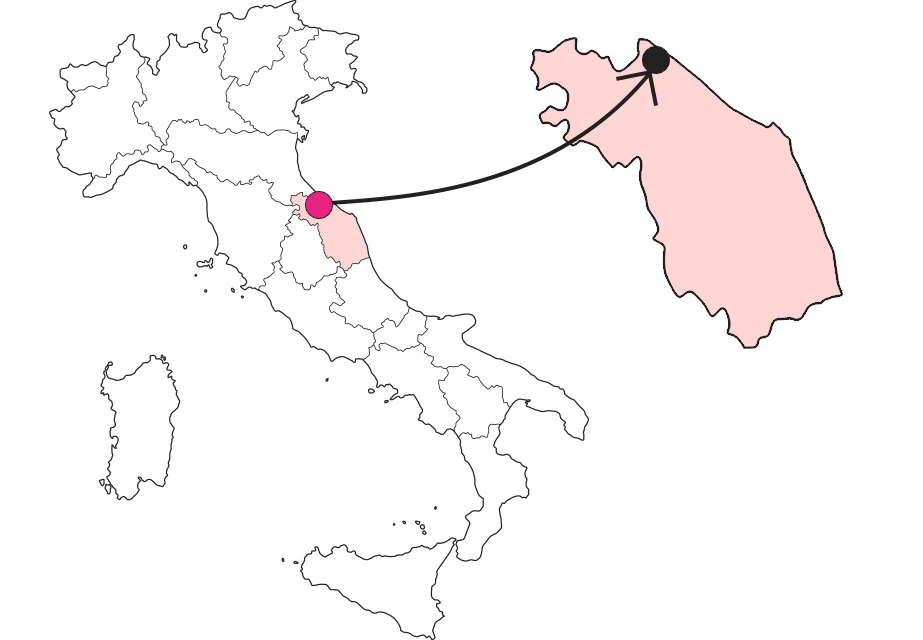SHARRYLAND


The secrets hidden in the Oratory of St. Joseph
A little flowering jewel hidden in the heart of Urbino



Where is

What it is and where it is
A short distance from the Oratory of St. John the Baptist, in the heart of Urbino, is a door adorned with a pair of elegant pilasters supporting a small tympanum surmounted by a cross. The sharp lines of the architecture are softened by the volutes at the top of the pilasters and those framing the cartouche that from the center of the tympanum invites us to go to Joseph: "Ite ad Joseph." And we obediently step out the small door and enter St. Joseph's Oratory.
Why it is special
The little church proper is a single hall richly decorated. On the walls, above a first level of wooden paneling, on the apse and on the vault, a dense weave of plant and animal elements unfolds among which peep putti, cartouches and coats of arms. Against this rich background stand four canvases telling the life of St. Joseph, while from the apse, a statue depicting him towers over the entire space, silhouetted candidly against the detailed embroidery of the background. Canvases and frescoes are by Carlo Roncalli, but we do an unusual thing today: we leave out the narrative of the paintings and focus on the wall decoration.
Not to be missed
At this point, a word of advice: if you have them, bring along a pair of binoculars. With this stratagem you will be able to unearth the many messages hidden in the interweaving of flora and fauna. Then you will effortlessly glimpse the white poplar garland, a reference to the patrons, the beautiful flowers, especially the lilies, a symbol of St. Joseph's purity, and the fruit, a reminder of abundance, but not the material kind. This is perhaps a more difficult symbol to grasp, but on the vault comes to our aid a cartouche that reads, "Fructus iust lignum vitae, " meaning "Fruit of the righteous is a tree of life." It is a tribute to the paternal role Joseph played in Jesus' life.
A bit of history
Home to the Congregation of the same name, St. Joseph's Oratory was completed in 1515 and later remodeled, so much so that the altar arrangement had to be changed due to moisture. A perpetual reminder of History and our origins echoes from the various Latin quotations placed in the cartouches.
Curiosities
Not only frescoes: there are also side chapels in the Oratory of St. Joseph, which are also related to the symbolism of nature. In the Wedding Chapel, for example, lilies and roses are found in Rondelli's stuccoes, both on the false canopy and in the hands of the angels adorning the vault. One of them even holds a flowering staff, a reminder of the episode from the apocryphal gospels that, among Mary's suitors, the chosen one would be the one whose dry staff had bloomed. Another marvelous chapel is that of the life-size Nativity scene created by Francesco Bandani, who not only sculpted the statues, but by intervening on the walls, reproduced a real grotto.
Enter the Map of Italy's Undiscovered Wonders and find treasures where you least expect it... Inspire, Recommend, Share...
Collections
The Map thanks:
Enter the Map of Italy's Undiscovered Wonders and find treasures where you least expect it... Inspire, Recommend, Share...
Where is

Collections

